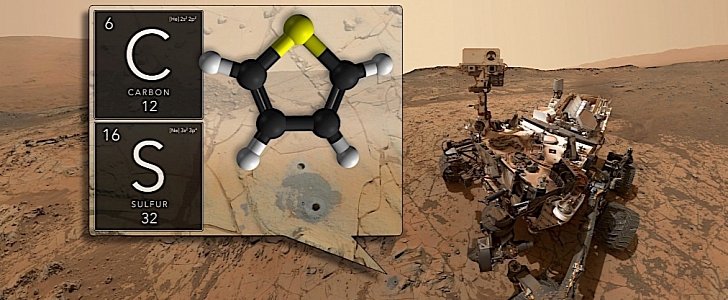Yes, it did. And no, it didn’t. The signs are there, but there nothing moving or breathing on Mars yet. Still, the findings announced on Thursday by NASA are the stuff of dreams.
At the center of the findings is the Curiosity Rover, a machine the size of an SUV that has been drilling holes in the Martian soil ever since 2012. All its struggles seem to have paid off.
NASA said on Thursday it found “new evidence preserved in rocks on Mars that suggests the planet could have supported ancient life.” There have actually been two discoveries made.
The first is the presence of organic molecules in 3-billion-year-old sedimentary rocks near the surface. These contain carbon, sulfur and hydrogen and may also contain oxygen and nitrogen. These molecules are usually associated with the presence of life.
The discovery was made by Curiosity in the Gale Crater, a region of the Red Planet that billions of years ago might have been a lake. Should this theory be correct, organic molecules in water might mean Mars had life eons ago.
Unfortunately, some non-biological processes might be producing them as well. For the time being, Curiosity managed only to discover the molecules but was unable to determine their origin.
The second discovery is the seasonal variations in methane concentrations in the Martian atmosphere. The presence of the gas is not extraordinary in itself, but the fact that its concentration varies is.
These variations mean that something is producing and/or something else is consuming it. Methane can be produced by biological beings, but it can as well be the result of non-biological processes.
Whatever the cause, the highest levels of methane were registered during the summer months. These levels drop every year during winter.
NASA seems confident that future research might prove once and for all that Mars was long ago teeming with life. Whether that life went extinct, was transported to Earth where it flourished or is still around remains to be determined.
In the document attached below is the detailed look into Curiosity’s findings, as announced by NASA.
NASA said on Thursday it found “new evidence preserved in rocks on Mars that suggests the planet could have supported ancient life.” There have actually been two discoveries made.
The first is the presence of organic molecules in 3-billion-year-old sedimentary rocks near the surface. These contain carbon, sulfur and hydrogen and may also contain oxygen and nitrogen. These molecules are usually associated with the presence of life.
The discovery was made by Curiosity in the Gale Crater, a region of the Red Planet that billions of years ago might have been a lake. Should this theory be correct, organic molecules in water might mean Mars had life eons ago.
Unfortunately, some non-biological processes might be producing them as well. For the time being, Curiosity managed only to discover the molecules but was unable to determine their origin.
The second discovery is the seasonal variations in methane concentrations in the Martian atmosphere. The presence of the gas is not extraordinary in itself, but the fact that its concentration varies is.
These variations mean that something is producing and/or something else is consuming it. Methane can be produced by biological beings, but it can as well be the result of non-biological processes.
Whatever the cause, the highest levels of methane were registered during the summer months. These levels drop every year during winter.
NASA seems confident that future research might prove once and for all that Mars was long ago teeming with life. Whether that life went extinct, was transported to Earth where it flourished or is still around remains to be determined.
In the document attached below is the detailed look into Curiosity’s findings, as announced by NASA.



